Transit Camp Westerbork (continued)
Different Outcomes
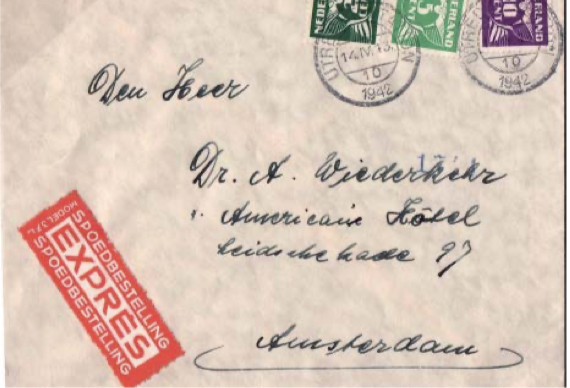
Dr. Arthur Wiederkehr is known to have visited Holland on several occasions. Often his dealings involved not only monetary transactions but the exchange of paintings by Dutch masters and valuable antiquities. His presence in Holland was clearly known to Jews trying to buy their freedom.
Willy Eichenwald lived in Utrecht and his letter to Wiederkehr in the Americain Hotel in Amsterdam is dated three months before Westerbork’s conversion from Refugee to Transit Camp. It was sent “express” indicating urgency.
Eichenwald was married to the former Erna Oppenheimer and the couple had two children, Dieter (b. 1925) and Klaus (b. 1928). The entire family was transported to Westerbork on April 21, 1943, where they stayed until September 14, 1943, when all were deported to Auschwitz. Willi and his two sons were murdered on arrival on September 17, 1943. Emma was one of 100 women who were sent to the “Versuchstation” (experimental laboratory) run by Professor Dr. Clauberg in Block 10 of the main Auschwitz camp. She survived horrific medical experiments and emigrated to the USA after the war.
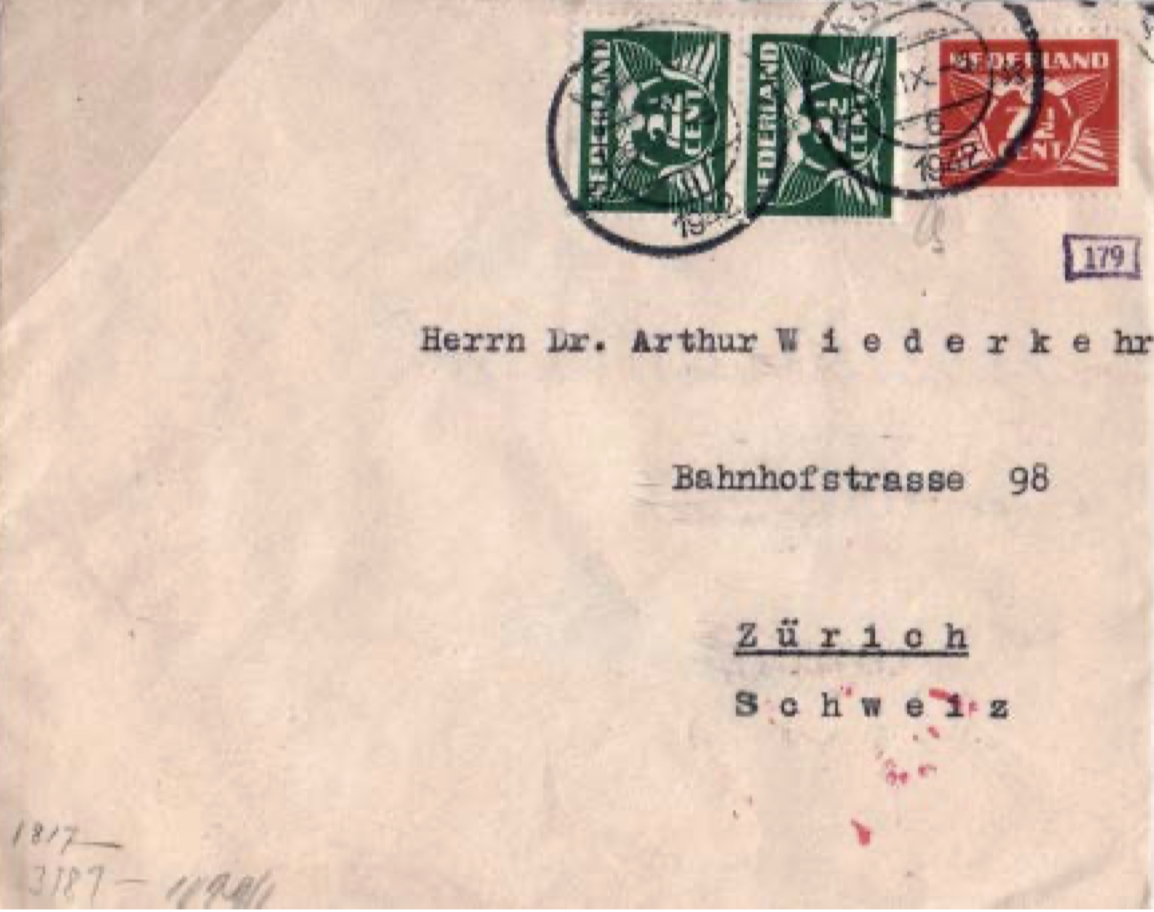
Mail from Westerbork to Wiederkehr in Zurich is extremely rare. The writer, Claire Perlberger-Untermann and her three sons had been taken to Westerbork in September 1941. The father had been stranded in New York when the war broke out. According to the administrative card from the Jewish Council, the family was still in Westerbork on November 13, 1942. Scheduled to be sent to Auschwitz on September 25, 1942, they were given a respite after bribing officials.
The family was deported to BergenBelsen on February 1, 1944, where Claire and her three sons were assigned to the “Sternlager” section, which comprised Jews who were thought to have some exchange value. In April 1945, the family was included in a group that the Germans had hoped to exchange for German POWs, in vain as it turned out.
The mother and three sons were eventually liberated by the Soviet Army on April 23, 1945, and were reunited with the father in the United States.
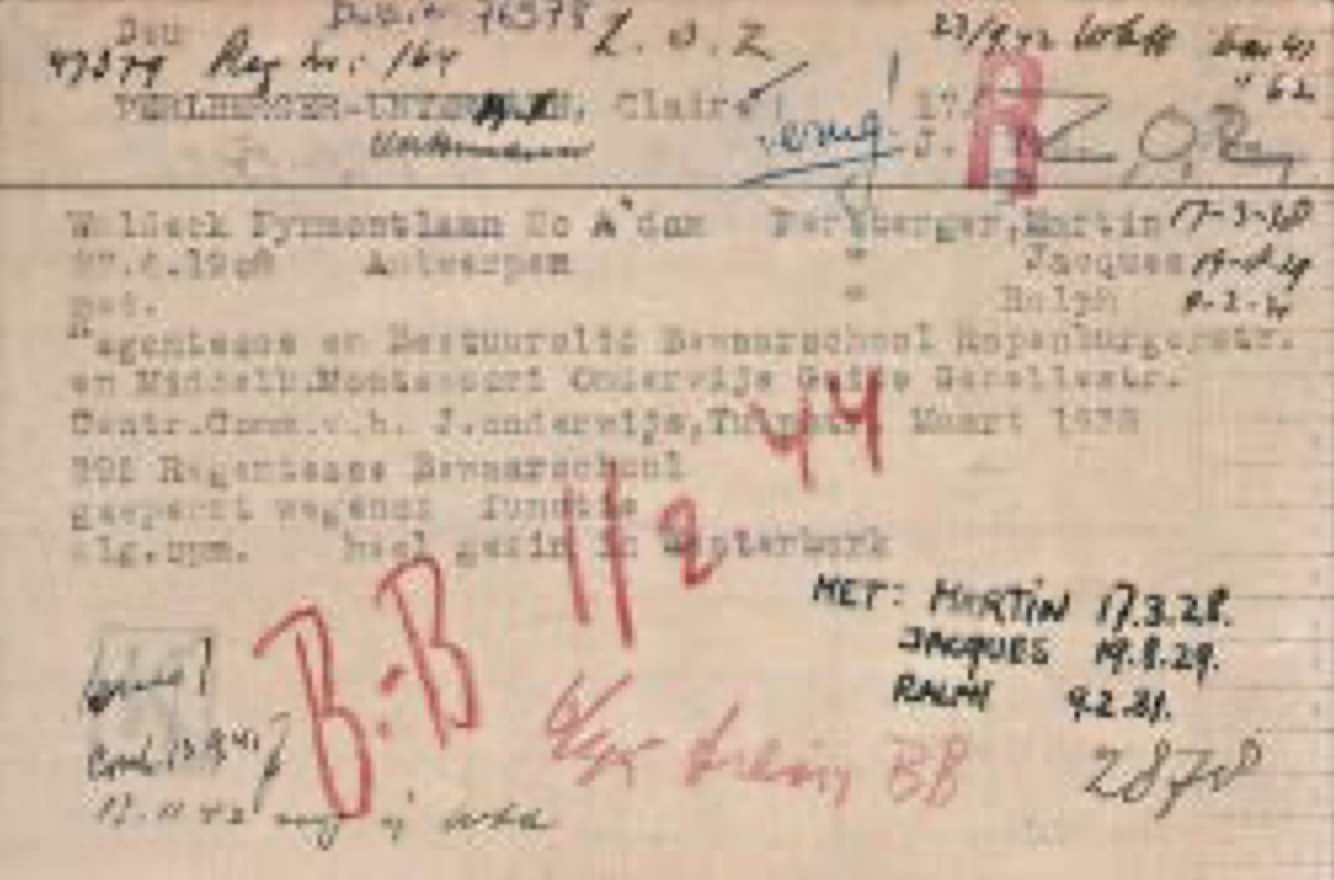
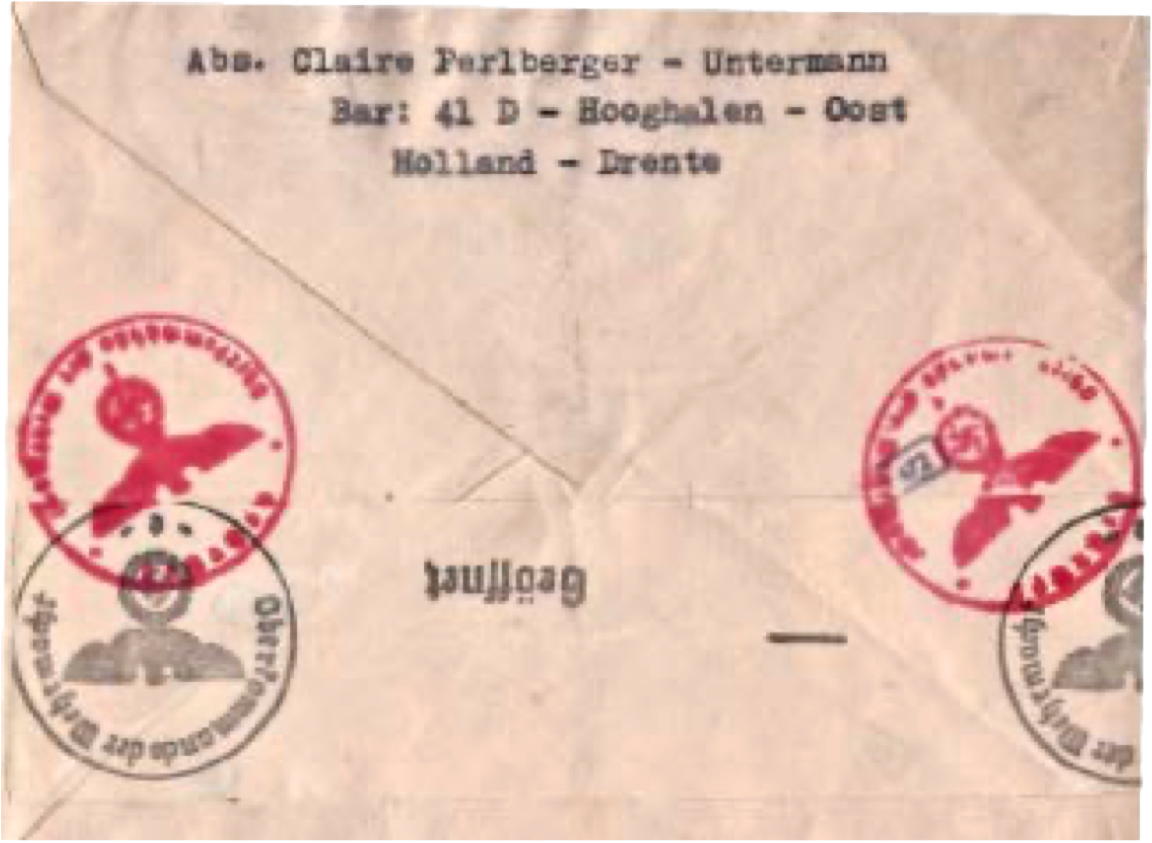
The Cardozo Deception
The fate of three families, Cardozo, De Paauw and Wessel, were intertwined, two through marriage and the other through friendship. On December 28, 1921 Abraham Cardozo (34) married Celina de Pauuw (33) and on March 24, 1922 the couple had a son, Isaak, who was called Ies by family and friends alike.
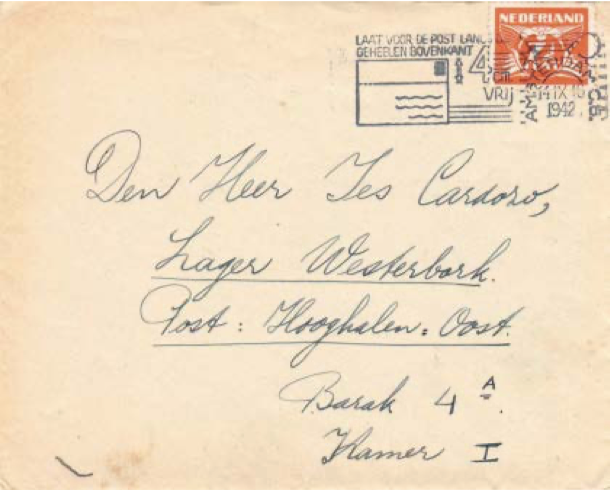
Ies Cardozo, age 20, was taken to Westerbork on September 1, 1942. Four friends contributed to a 4-page letter, dated September 13 and mailed to him by his good friend Bernard Wessel, the brother of Ies’s girlfriend, Dora. This account relates what happened to Les, his family, and his friends.
Bernard Wessel was initially exempt from being sent to Westerbork becauae of his work as a courier for the Jewish Council. It turned out to be only a temporary delly and he was sent to the camp on June 20, 1943.
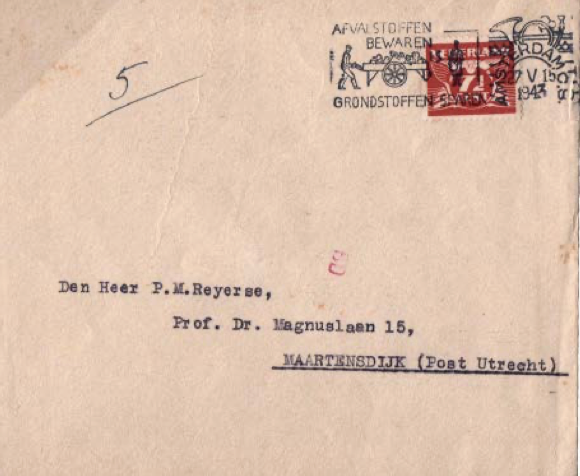

… to my relief, I heard that you will be able to stay in Westerbork for now and were not deported… I spoke to your father, and he said that he had gathered all the evidence and sent it to Westerbork, this probably helped with your good fortune not to be deported immediately…
…we are worried sick with those roundups…
…I have to prepare you for the fact that you will see your parents in Westerbork…
… happy you are in touch with my grandmother, it was quite a blow she was taken away on Friday …
According to the registry card in the Arolsen Archives, Ies Cardozo was released from Westerbork on March 8, 1943. He is listed as a Mischling (lit. half-breed), a person of mixed race, although both his parents were Jewish.
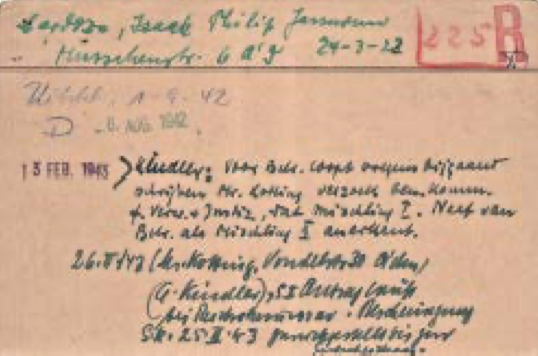
The solution can be found via the name Kotting on the card. He was a Dutch lawyer married to a Jewish woman. Kotting, his colleague Van Proosdij and an attorney for the Portuguese-Israeli Synagogue in Amsterdam protected Sephardic Jews from deportation by constructing a vast web of false archives using fake stamps and inks.
After the war, Kotting and Van Proosdij were recognized by Yad Vashem as Righteous among the Nations. Thanks to their efforts, Les Cardozo was released from Westerbork. Others mentioned in this account were not as fortunate:
- His parents died in Sobibor on May 28, 1943
- His brother, David, died in Auschwitz on on October 14, 1944
- His grandmother Bloema De Paauw died in Bergen-Belsen on March 16, 1945 Bernard Wessel died in Sobibor on July 2, 1943
- His girlfriend, Dora Wessel died in Sobibor on July 16, 1943.
The Bergmann Saga
%2C%20November%2018%2C%201940.png)
November 18, 1940: “…since the middle of September I have had only one message via the Red Cross.”
This extraordinary archive of postcards and letters sent by Dr. Alfons Bergmann, a Jewish physician interned in Westerbork, to Dr. Arthur Buttermilch, a Jewish colleague and friend in Sweden runs from November 18, 1940, to July 28, 1943,. The latter’s mother was also held in Westerbork, and Bergmann regularly writes about her health.
Dr. Kurt Alfons Bergmann, born in Berlin in 1888, arrived in Holland on December 1, 1938, and stayed in camps for legal refugees in Reuver and Hoek can, Holland. He was taken to Westerbork on May 28, 1940, and would witness its transition from refugee to transit camp.
January 8, 1941: “… I hope to get some news from my cousin in Boston.”
%2C%20January%208%2C%201941.png)
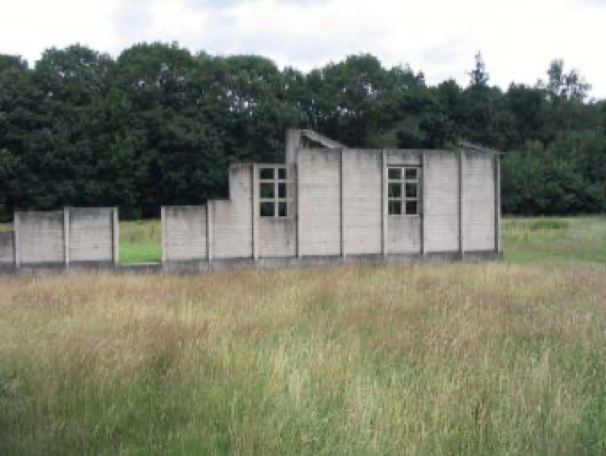
December 19, 1941: “… I have now been in this country 3 years and no one knows how long it will take.”
%2C%20December%2019%2C%201941.png)
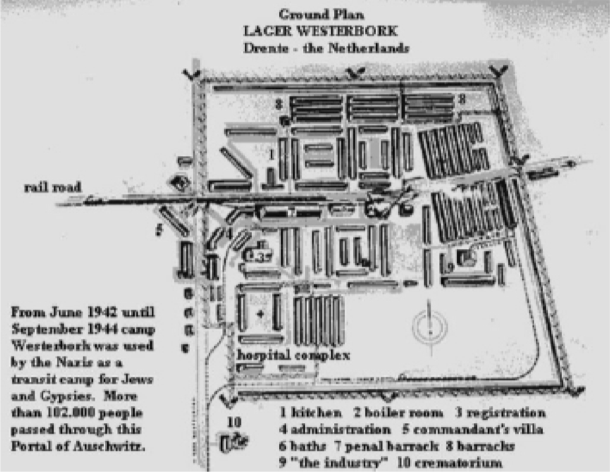
The Bergmann Saga (2)
%2C%20December%2029%2C%201942.png)
December 29, 1942: “…It has now been 4 years since I was separated from my loved ones…”
%2C%20July%2023%2C%201943.png)
July 23, 1943: “…have not heard anything.”
As of July 1942, Camp Westerbork started deporting Jews to “The East.”
Selma Samuel was a corset maker born in Salzkotten, Germany, on March 23, 1903. According to Dutch Red Cross file #66547 she and Alfons Bergmann were married in Camp Westerbork on March 23, 1943.
On September 4, 1944, the Bergman’s were deported to Theresienstadt on one of the last trains to leave Westerbork, having been in the camp since 1940. From there, Alfons Bergmann and his wife of less than two years were taken to Auschwitz, where they were murdered on October 14, 1944.
%2C%20July%209%2C%201943.png)


Ghost Letters (1)
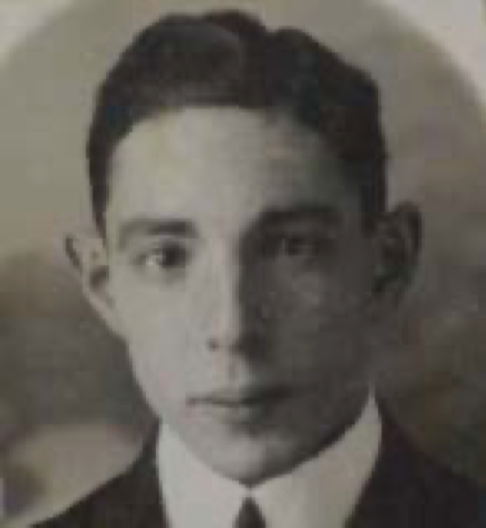
Evidence of the deportation of Jews can be found in the letters that never reached the addressee. Mail had to include the name of the camp resident, their date of birth and the number of the barracks where he or she resided.
Mail addressed to those already sent east to the concentration camps was returned to the sender with handstamps and manuscript markings that left no illusions as to the fate of the addressee. Some addresses were crossed out, while others were marked with a simple “T” for “transport”, a deceptively discrete notation that indicated the likely death of the intended recipient.

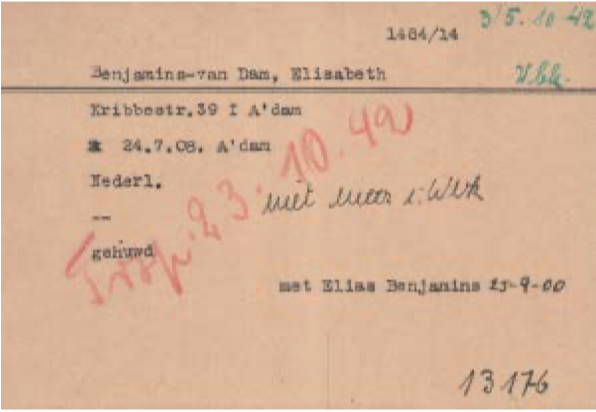
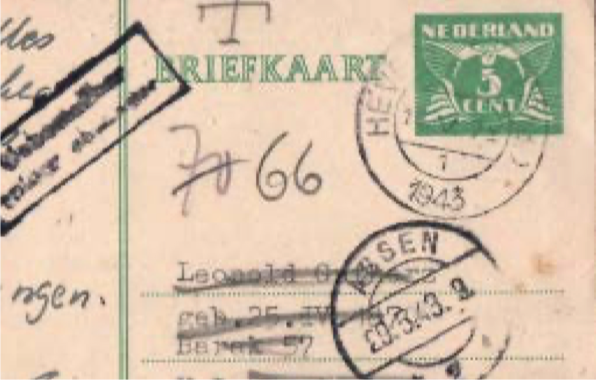
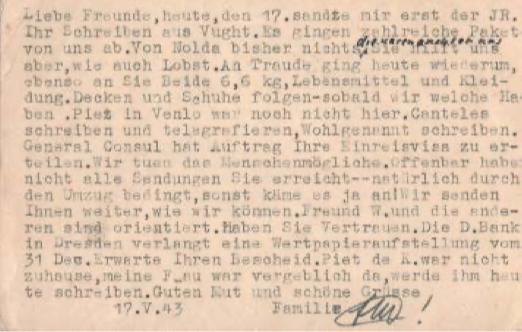
Consul General has instructions to arrange for your entry visas. We are doing everything humanly possible ... Please have faith ... Expect your response ... Keep up your courage.
The card from Doorwerth (near Arnhem), was written on May 17, 1943, posted on May 19 and returned by the Assen post office handling Westerbork mail on May 1943. Leopold Gutherz, the addressee, had been murdered in Sobibor on May 28, 1943, i.e. the day before Westerbork returned the card.